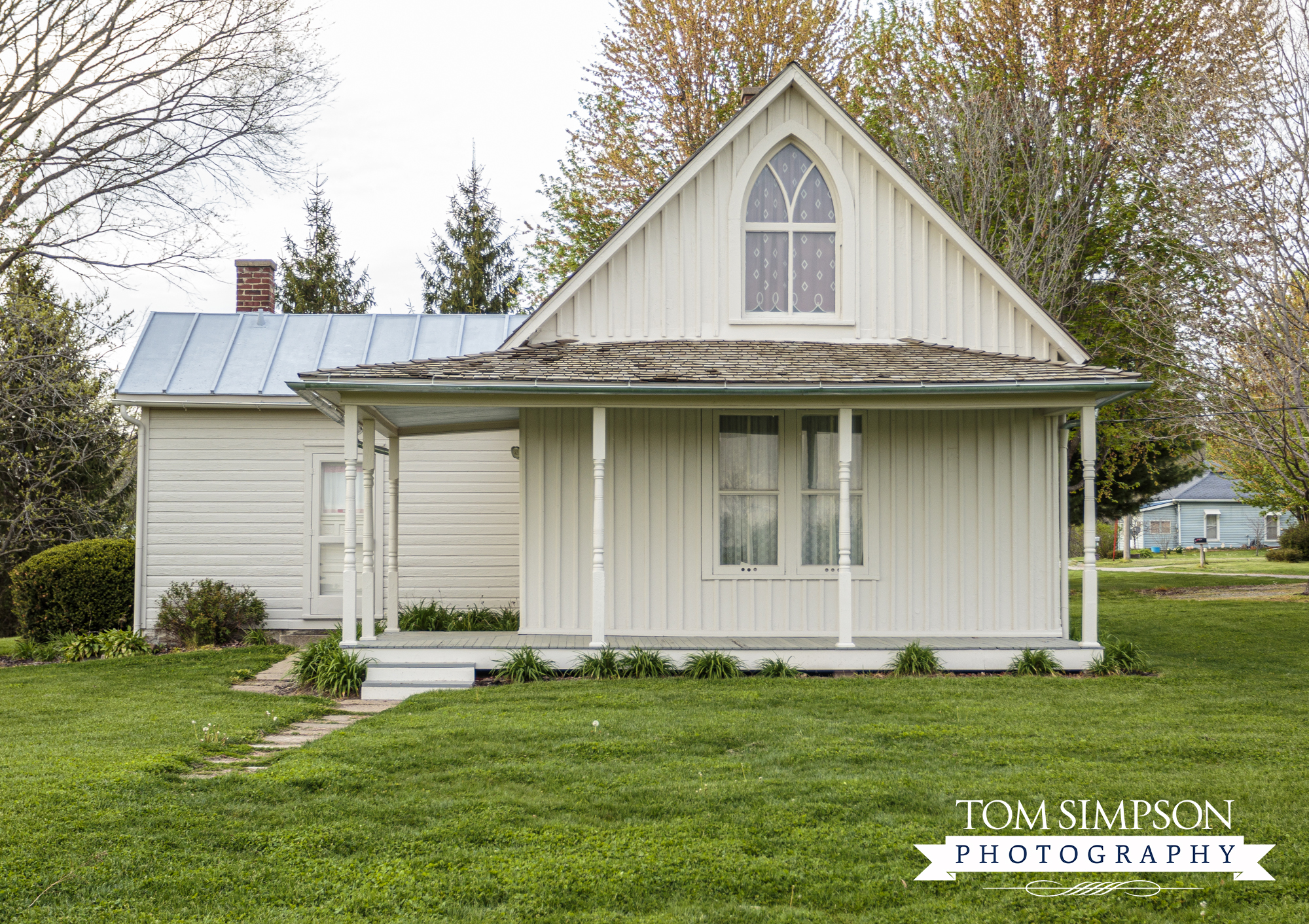Our Quick Stop in Eldon, Iowa
As I have said before, every little town has a claim to fame. Eldon, Iowa is no different. While the town’s name isn’t readily recognized, one little white farm house in Eldon sure is. Our quick stop to see this American icon had us smiling.
This stop was one of those unplanned see-the-sign-and-take-the-detour kind of stop. But since we both studied art, we recognized the name “American Gothic House” when we saw the sign. Of course, we had to stop.
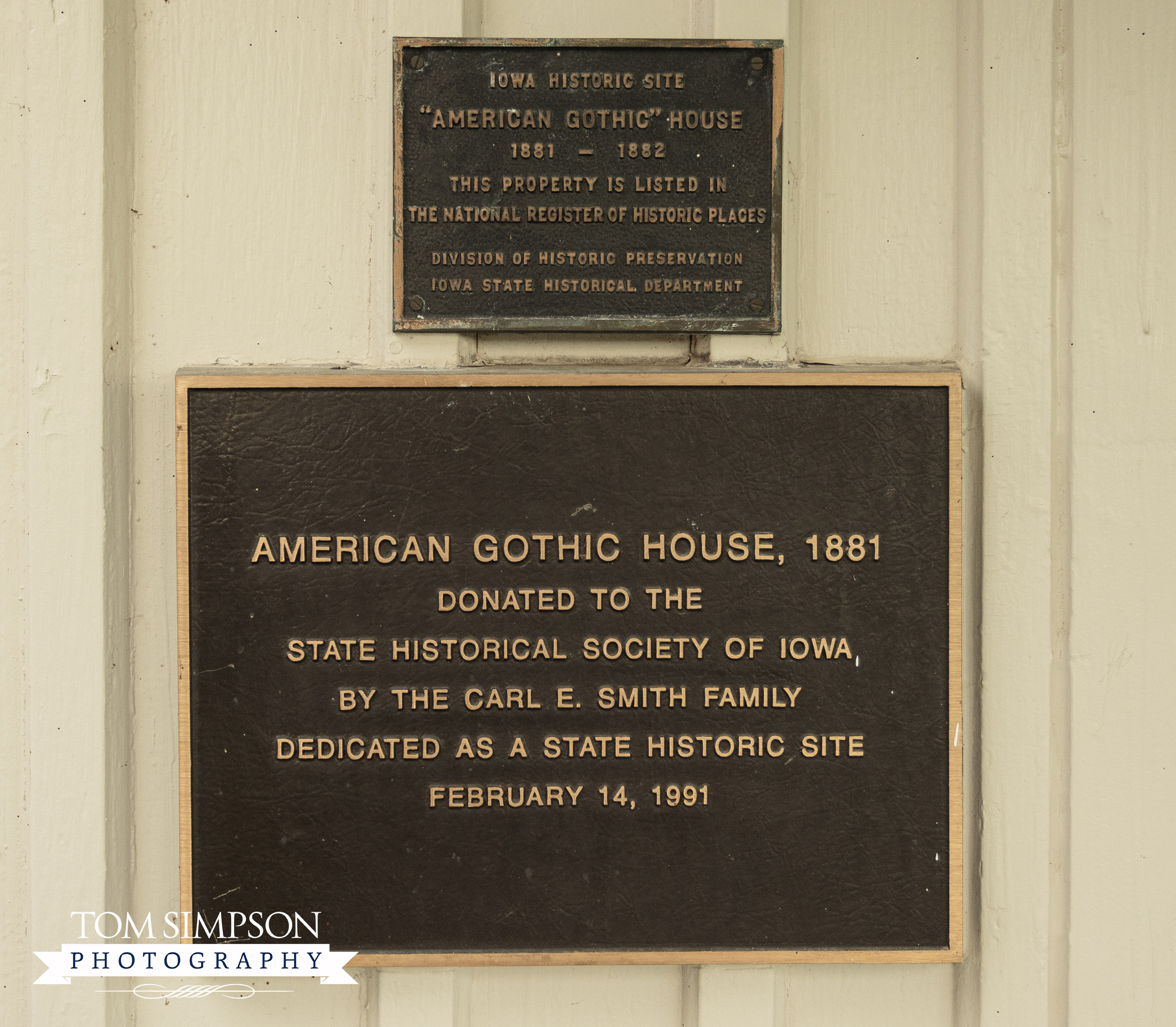
The house is registered in both the National Registry and Iowa State as an Historic Site.
Location:
300 American Gothic Street
Eldon, Iowa 52554
Contact:
(641) 652-3352
Hours:
10 AM - 4 PM, Wed-Sat
1-4 PM, Sun
Closed, Mon-Tues
Fees: free
Website:
AmericanGothicHouse.org
The Famous House
Eldon’s claim to fame is the house used as a backdrop and inspiration for the American Gothic painting by Grant Wood.
Built in 1881 for the Charles Dibble family, the Carpenter Gothic style house has three features most notable in the painting:
- Gothic window with pattern resembling a curtain
- The steep-pitched roof
- Board and batten siding
All three were unusual home features for the time. They could be what caught Wood’s eye when he noticed “a very paintable" house during his 1930 visit to Eldon.
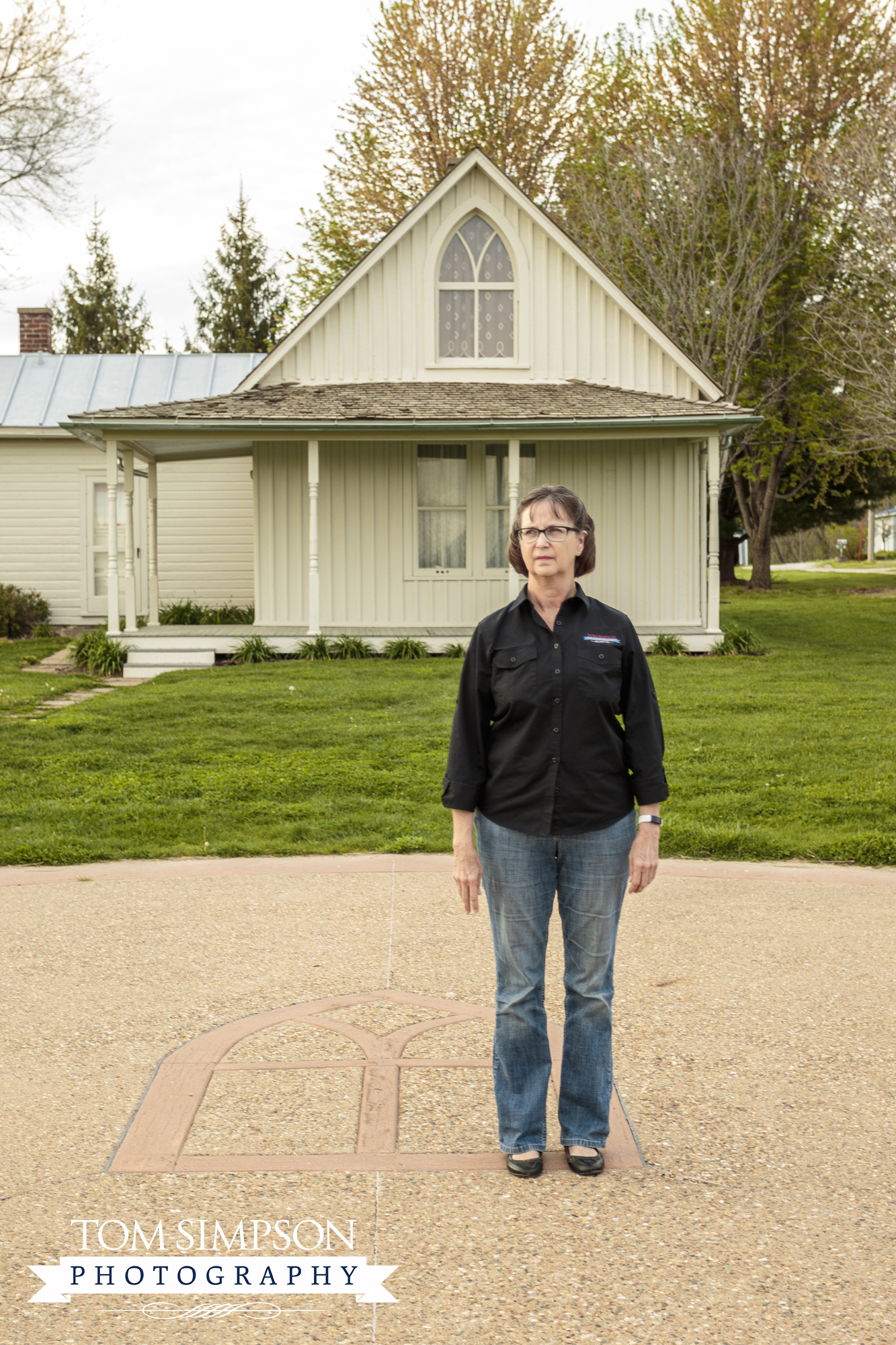
Window shape inlaid in the sidewalk helps visitors know where to stand to replicate the iconic shot.
The house, now owned by the State Historical Society of Iowa, still sits on its original site. It listed on the National Register of Historic Places in 1974.
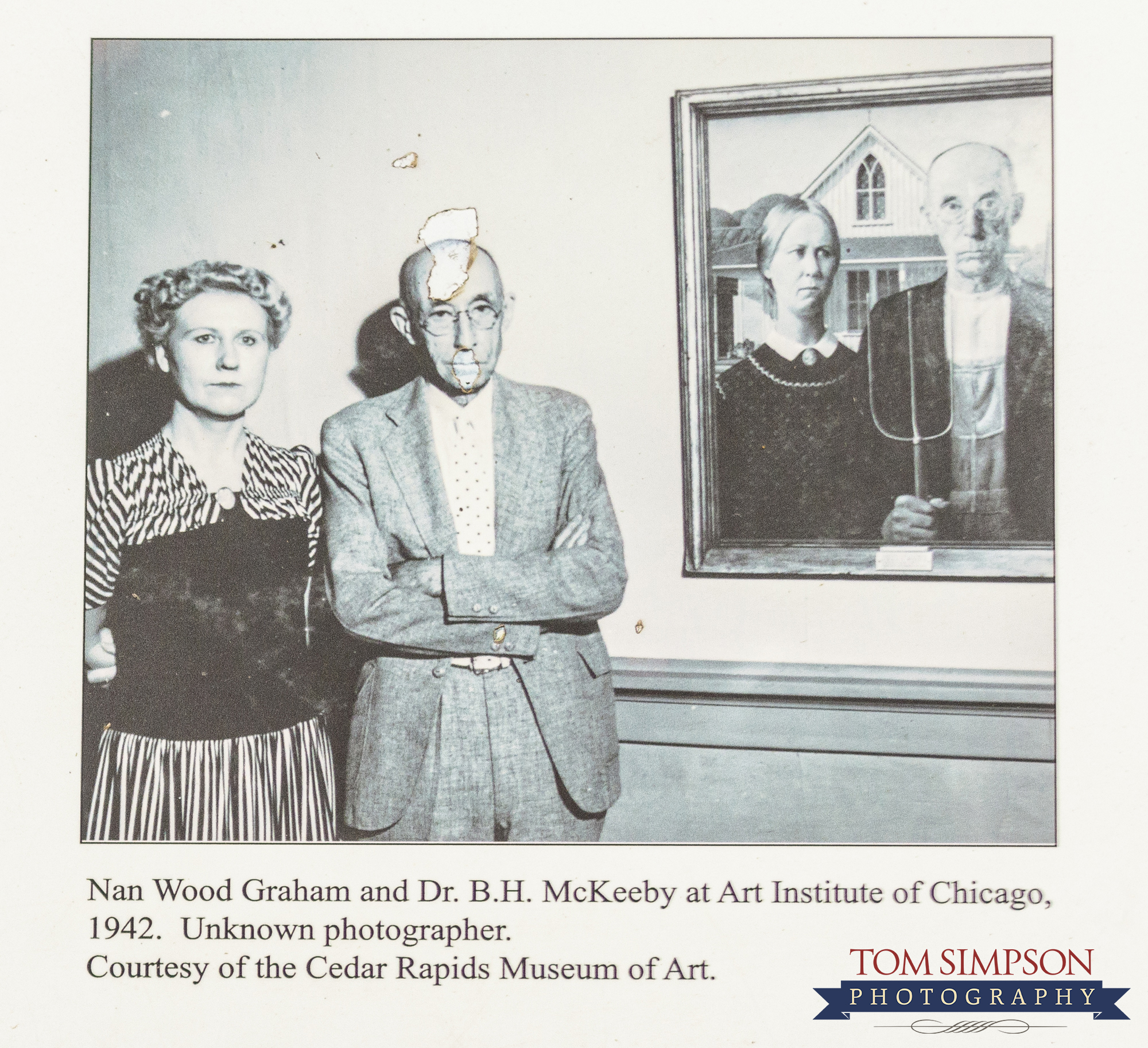
Models stand beside the finished painting.
The Iconic Painting
The American Gothic painting is one of the most iconic in all American Modernist art. No doubt you have seen it somewhere in your life. It’s an all-time favorite for parodies.
In his 1930 painting, Grant Wood placed a farmer and his daughter in front of the house. He asked his sister, Nan, and his dentist to pose as models. Dressed in typical Midwest farm clothing, the painting shows Dr. McKeeby holding the now infamous pitchfork.
The original painting hangs in the Art Institute of Chicago in gallery 263.
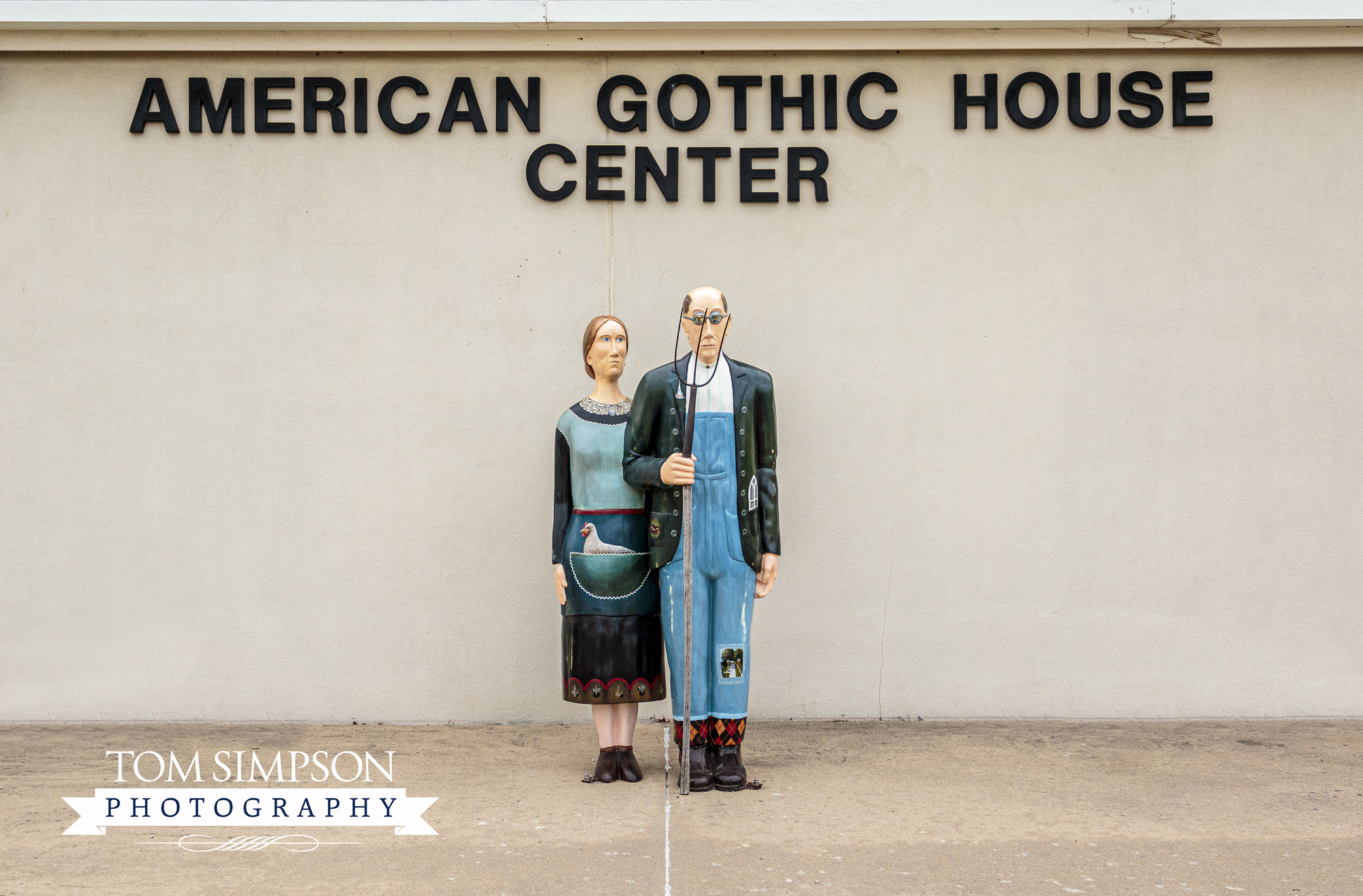
Statues outside the visitor center are perfectly placed for selfies.
The Whimsical Roadside Attraction
Good signage gets you from Highway 34 to the American Gothic House. Incidentally, it is only a short 6-mile drive.
The whimsical roadside attraction is adjacent a visitor’s center and large parking lot. Outside the center are statues of the farmer and daughter. Yep, we posed with them for a few pics.
Unfortunately, we were there on a day the visitor’s center was closed but we hear they have a pitchfork for any who want strike a pose. Costumes are available when enough staff is on hand....and it’s all free.
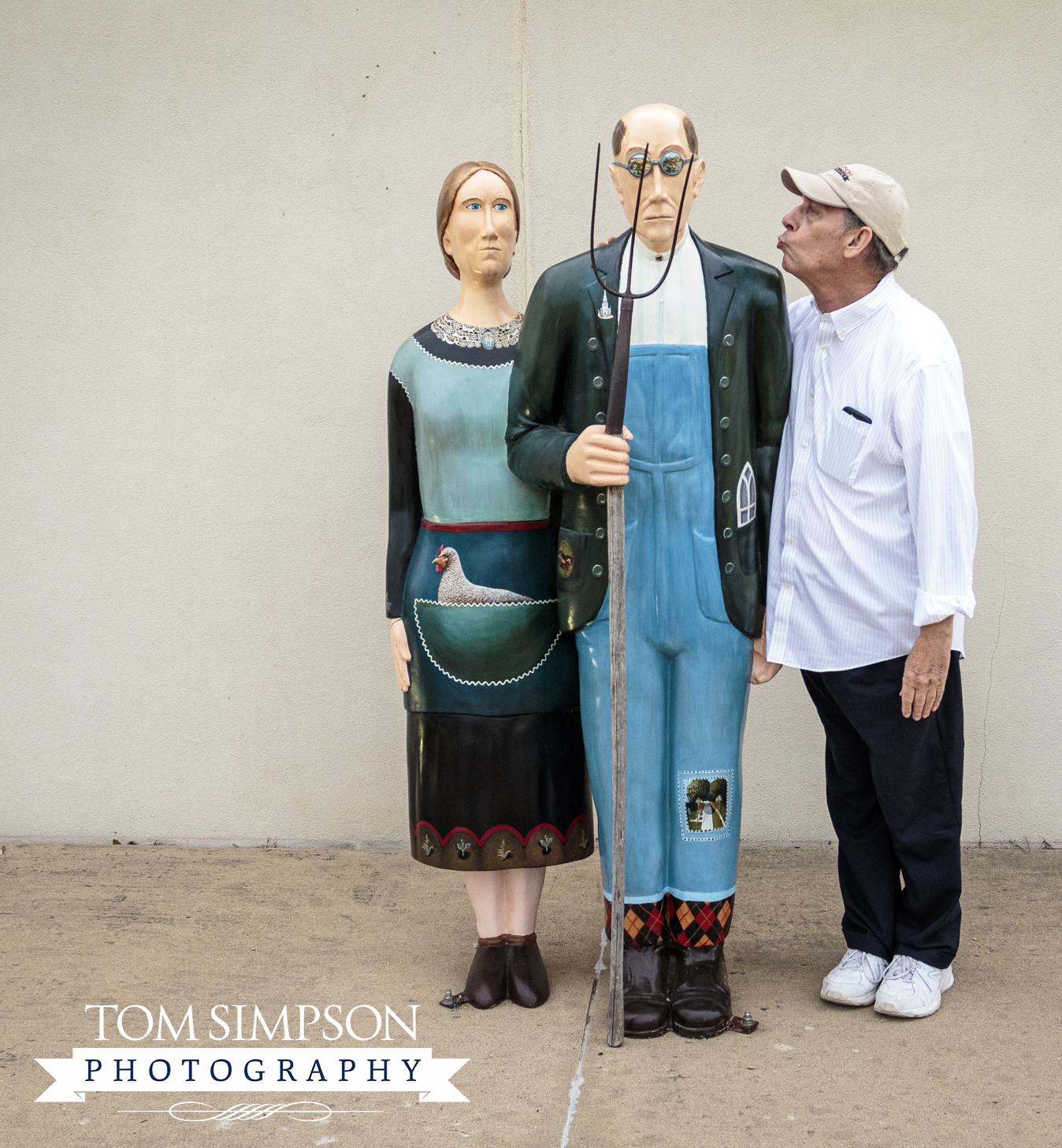
A little on the sillier side....
Bet You Can't Resist the Pose
You’ll find a large pebbled sidewalk circle with several information boards in front of the house. Here, an inlaid “window” marks the spot for getting your own iconic shot with the house in the background.
Will you strike a pose in front of one of art history’s big icons? Yep. You will. Thousands do each year as they take the detour off the beaten path to Eldon.
Our quick stop was worth the detour. Yours will be too.
About the Artist
Born in Anamosa, Iowa in 1891, Grant Wood spent most of his early years in this rural farm town. His family moved to Cedar Rapids when he was 10-years old.
After high school, he moved to Minneapolis, where he enrolled in the Handicraft Guild school. In 1913, Grant began his studies at the infamous Art Institute of Chicago followed by study in France.
Returning to Cedar Rapids, he was a jack-of-all-trades—art teacher, product designer, muralist, home decorator, and portrait artist.
Inspiration for his paintings came from daily life, such as “the very paintable house” he found in Eldon. His regionalist signature style included overalls and utilitarian dress.
In 1930, his American Gothic painting took 3rd place in The Art Institute of Chicago’s annual exhibition, launching him into national spotlight.
Grant taught at the University of Iowa off and on from 1934 until his death in 1942.
Wanting more ideas on relaxing, playing or learning?
Check out our "Things to Do" page for other Worthy Detour stops.

